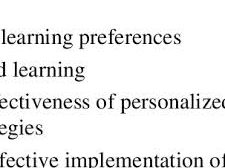Introduction
Narcissism is a term that’s often thrown around in everyday conversations, but it goes far beyond having a healthy sense of self-esteem. In this blog, we’ll explore the complex world of narcissism, helping you understand what narcissism is, its various manifestations, and how to deal with narcissists in your personal and professional life.
Subheading 1: What is Narcissism?
Narcissism refers to a personality trait or disorder characterized by an excessive focus on oneself, a lack of empathy for others, and a constant need for admiration and validation. It’s essential to differentiate between healthy self-confidence and pathological narcissism. While self-esteem is essential for a healthy psyche, narcissism takes self-love to an extreme, often to the detriment of others.
Subheading 2: The Spectrum of Narcissism
Narcissism isn’t a one-size-fits-all concept; it exists on a spectrum. Understanding this spectrum helps us recognize the varying degrees of narcissism in people:
a. Narcissistic Personality Disorder (NPD): This represents the extreme end of the spectrum, where individuals display a pervasive pattern of grandiosity, a constant need for admiration, and a lack of empathy for others.
b. Subclinical Narcissism: People with subclinical narcissism exhibit narcissistic traits without meeting the full criteria for NPD. They may still display a strong sense of entitlement, a desire for admiration, and a lack of empathy.
c. Healthy Narcissism: On the milder end of the spectrum, healthy narcissism represents a balanced sense of self-worth, confidence, and self-love, which is essential for a well-rounded personality.
Subheading 3: Recognizing Narcissistic Behavior
Identifying narcissistic behavior can be challenging, as narcissists often excel at hiding their true nature. However, some common signs include:
a. Excessive self-centeredness: A narcissist frequently talks about themselves, disregarding the feelings and experiences of others.
b. Manipulation: They may employ manipulation tactics to get what they want, such as gaslighting, guilt-tripping, or emotional blackmail.
c. Lack of empathy: Narcissists struggle to understand or care about the feelings and needs of others.
d. Fragile self-esteem: Despite their grandiosity, narcissists often have fragile self-esteem and react strongly to criticism.
Subheading 4: Coping with Narcissists
Dealing with narcissists can be challenging, but it’s not impossible. Here are some strategies to help you navigate relationships with narcissistic individuals:
a. Set Boundaries: Clearly define your boundaries and stick to them. Narcissists may push limits, but it’s essential to maintain your personal boundaries.
b. Limit Emotional Investment: Don’t expect empathy or emotional support from a narcissist. Seek support from others who can provide it.
c. Avoid Confrontation: Engaging in direct confrontation can often backfire. Instead, choose your battles wisely and consider seeking professional help.
d. Self-Care: Take care of your own mental and emotional well-being. Surround yourself with supportive and healthy relationships.
Subheading 5: Seeking Professional Help
If you’re in a relationship with a narcissist, seeking professional guidance from a therapist or counselor is often the best course of action. A mental health professional can provide you with coping strategies and help you decide whether it’s safe or beneficial to continue the relationship.



